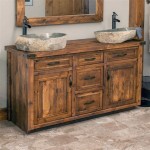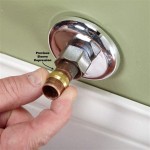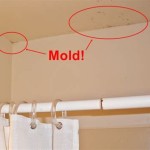How To Paint Tile In Bathroom Floor: A Comprehensive Guide
Painting bathroom floor tiles can be a cost-effective and relatively straightforward method for updating the aesthetics of a bathroom without the extensive cost and disruption associated with full tile replacement. However, successful tile painting requires careful preparation, the selection of appropriate materials, and meticulous application to ensure a durable and visually appealing finish. This article provides a detailed guide outlining the essential steps and considerations for painting bathroom floor tiles.
Key Point 1: Assessing Suitability and Preparing the Surface
Before undertaking any painting project, it is crucial to assess whether painting is a suitable solution for the existing tile condition. Consider factors such as the type of tile, the extent of damage, and the overall intended outcome. Certain types of tiles, such as very porous or heavily textured tiles, may not be ideal for painting due to potential adhesion issues or difficulty in achieving a smooth, even finish. Deeply etched or severely damaged tiles might require more extensive repair or replacement rather than painting.
The first crucial step is thorough cleaning. This involves removing all traces of dirt, grime, soap scum, and mildew. Use a strong tile cleaner and scrub brush to dislodge stubborn residues. Pay particular attention to grout lines, which often harbor significant amounts of dirt. After scrubbing, rinse the floor thoroughly with clean water and allow it to dry completely.
Once the floor is clean and dry, inspect it for any cracks, chips, or other damage. Small cracks and chips can be filled with epoxy filler or tile repair compound. Apply the filler according to the manufacturer's instructions, ensuring that it fills the void completely and is flush with the surrounding tile surface. Allow the filler to cure fully before proceeding.
Sanding the tile surface is a critical step in preparing it for painting. Sanding creates a slightly rough surface, which allows the primer to adhere more effectively. Use a medium-grit sandpaper (around 120-180 grit) to lightly sand the entire tile surface. Focus on achieving a uniform matte finish rather than removing the existing gloss entirely. After sanding, thoroughly remove all sanding dust with a vacuum cleaner and a damp cloth. Ensure the floor is completely dry before moving to the next step.
Finally, masking is essential to protect adjacent surfaces from paint. Apply painter's tape along baseboards, walls, bathtubs, toilets, and any other areas that you do not want to paint. Overlap the tape slightly onto the tile surface to ensure a clean, crisp line. This step is crucial for achieving a professional-looking finish.
Key Point 2: Selecting the Appropriate Materials
The longevity and appearance of the painted tile floor depend significantly on the quality and type of materials used. Selecting the correct primer and paint is essential for achieving a durable and aesthetically pleasing result.
Primer is a crucial component that creates a strong bond between the tile surface and the paint. Use an epoxy-based primer specifically designed for use on tile and glossy surfaces. Epoxy primers offer superior adhesion and resistance to moisture, which is particularly important in a bathroom environment. Apply the primer using a brush or roller, following the manufacturer's instructions regarding coverage and drying time. Ensure the primer is applied in a thin, even coat to avoid drips or pooling. Allow the primer to dry completely before applying the paint.
The choice of paint is equally important. Two-part epoxy paints are often recommended for bathroom floor tiles due to their exceptional durability, water resistance, and ability to withstand heavy foot traffic. These paints create a hard, non-porous surface that is resistant to staining, scratching, and chipping. Another option is a high-quality acrylic latex paint formulated for floors. Look for paints that are specifically labeled as suitable for use on tile or concrete floors and that offer excellent adhesion and water resistance. Semi-gloss or gloss finishes are generally preferred for bathroom floors, as they are easier to clean and more resistant to moisture. Avoid matte finishes, which can be more susceptible to staining and difficult to clean.
Beyond primer and paint, several other tools are necessary for a successful tile painting project. High-quality paint brushes and rollers are essential for achieving a smooth, even application. Use a brush for cutting in along edges and corners and a roller for painting the main surface of the floor. Consider using a short-nap roller for a smoother finish. Paint trays are needed to hold the paint and facilitate even loading of the roller. Painter's tape is used to mask off areas that should not be painted. Drop cloths or plastic sheeting are essential for protecting surrounding surfaces from paint splatters. Safety glasses and gloves are recommended to protect your eyes and skin from paint and primer. A well-ventilated space is necessary to minimize exposure to fumes from paint and primer.
Key Point 3: Applying the Paint and Ensuring a Durable Finish
Proper application is key to achieving a professional-looking and durable finish. The paint should be applied in thin, even coats to prevent runs, drips, and uneven coverage.
Begin by "cutting in" along the edges of the floor with a brush. This involves painting a narrow strip along the baseboards, walls, and other areas where the roller cannot reach. Use a steady hand and apply the paint smoothly and evenly. Avoid applying too much paint at once, which can lead to drips and runs.
Once the edges are cut in, use a roller to paint the main surface of the floor. Load the roller evenly with paint and apply it in smooth, overlapping strokes. Maintain a wet edge to prevent lap marks. Avoid applying too much pressure to the roller, which can squeeze out excessive paint and create an uneven finish. Apply the paint in thin, even coats, allowing each coat to dry completely before applying the next.
Multiple thin coats of paint are always preferable to one thick coat. Thin coats dry more evenly and are less prone to cracking or chipping. Apply at least two coats of paint, or more if necessary to achieve full coverage and a uniform color. Allow each coat to dry completely according to the manufacturer's instructions before applying the next coat. Drying times can vary depending on the type of paint, humidity, and temperature. Rushing the drying process can result in a soft, tacky finish that is easily damaged.
Once the final coat of paint has dried completely, carefully remove the painter's tape. Pull the tape away from the painted surface at a 45-degree angle to minimize the risk of chipping the paint. If any paint has seeped under the tape, use a razor blade or utility knife to carefully score the paint along the edge of the tape before removing it.
To improve the durability and longevity of the painted tile floor, consider applying a clear topcoat. A clear polyurethane or epoxy topcoat will provide an extra layer of protection against scratches, stains, and moisture. Apply the topcoat according to the manufacturer's instructions, ensuring that it is applied in thin, even coats. Allow the topcoat to dry completely before using the bathroom. Avoid placing heavy objects on the floor during the curing process.
Proper curing is crucial for achieving a durable and long-lasting finish. Allow the painted floor to cure completely before using the bathroom. Curing times can vary depending on the type of paint and topcoat used. Consult the manufacturer's instructions for recommended curing times. Avoid exposing the painted floor to water or heavy traffic during the curing process. Once the floor is fully cured, it can be cleaned with mild soap and water. Avoid using harsh chemicals or abrasive cleaners, which can damage the painted surface. Regular cleaning and maintenance will help to keep the painted tile floor looking its best for years to come.
Grout lines, often a noticeable visual element, can be addressed with a grout pen or grout stain to refresh their appearance. A grout pen provides a quick and easy way to touch up stained or discolored grout lines. Grout stain offers a more durable solution for restoring grout to its original color or changing its color entirely. Follow the manufacturer's instructions for applying grout pen or grout stain, ensuring that the grout lines are clean and dry before application.
Even with meticulous preparation and application, painted tile floors are not as durable as traditionally installed tile. They are more susceptible to scratching, chipping, and peeling, particularly in high-traffic areas or areas exposed to frequent moisture. Regular maintenance and care are essential for prolonging the life of the painted floor. Promptly clean up any spills or stains to prevent them from penetrating the paint. Use rugs or mats in high-traffic areas to minimize wear and tear. Avoid dragging heavy objects across the floor. Re-apply the topcoat as needed to maintain a protective barrier. While painting tile is a budget-friendly alternative to complete replacement, understanding its limitations is crucial for realistic expectations and long-term satisfaction.

How To Paint Your Bathroom Floor Tile Young House Love

How To Paint A Tile Floor Artsy Rule

How To Paint Tile Floor In A Bathroom Angela Marie Made

The Best Paint For Tile Arinsolangeathome Black Bathroom Floor Painted Floors Painting

Painted Floor Tile Bathroom Makeover

Diy How To Paint Ceramic Floor Tile Farmhouse Living

How To Paint Tile Floor Angela Marie Made

How To Paint Tile Floors Arinsolangeathome Painting Bathroom Tiles

How To Paint Your Bathroom Tile Floors Toolbox Divas

20 Painted Tile Floor Ideas To Update Your Space Making Maanita
Related Posts







